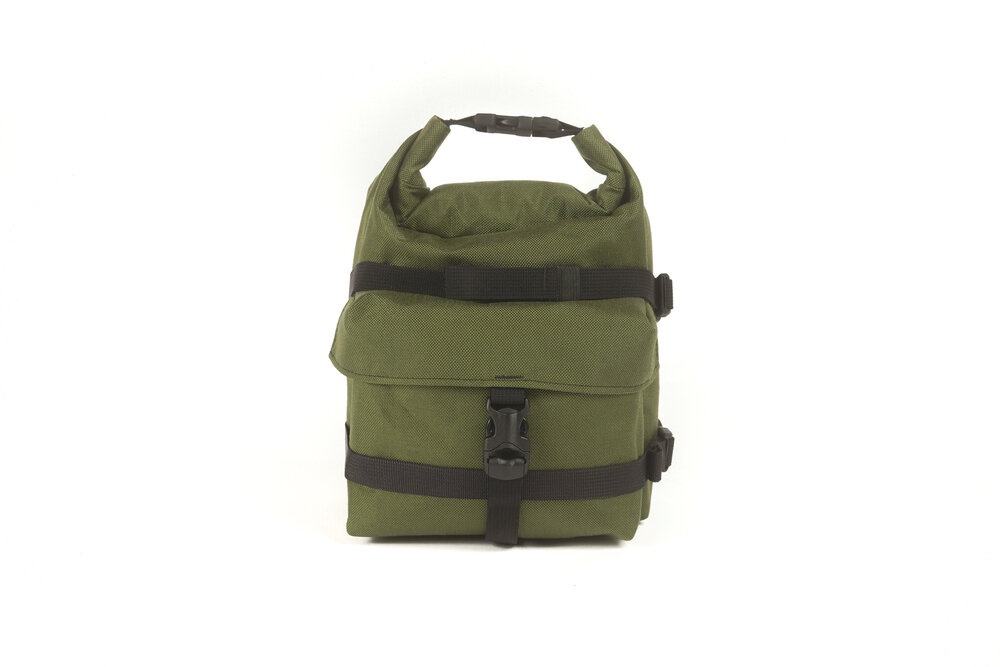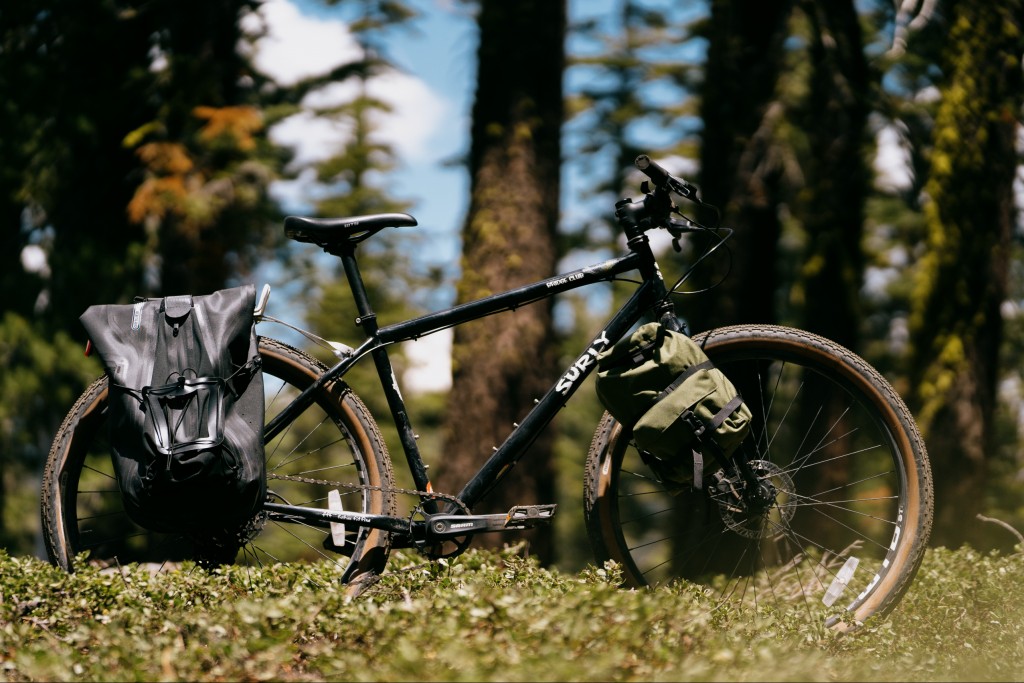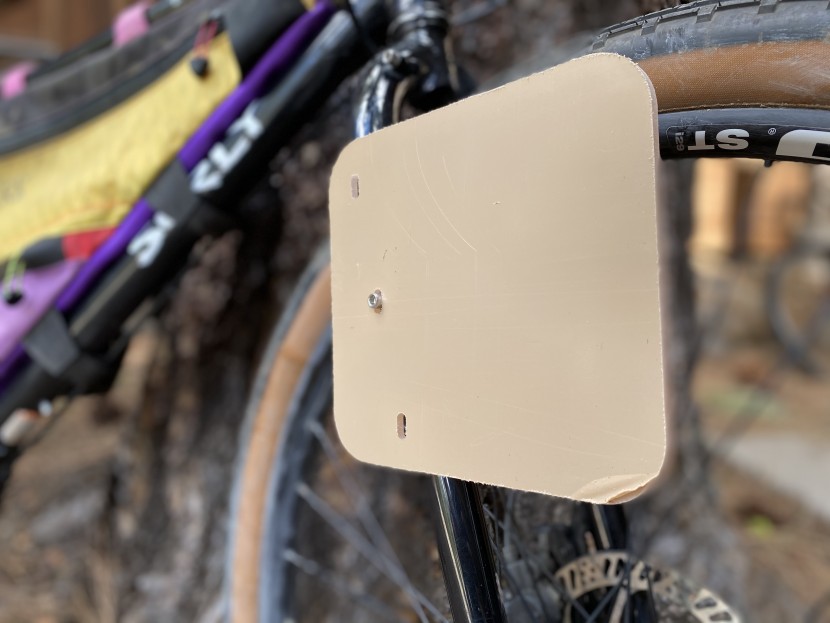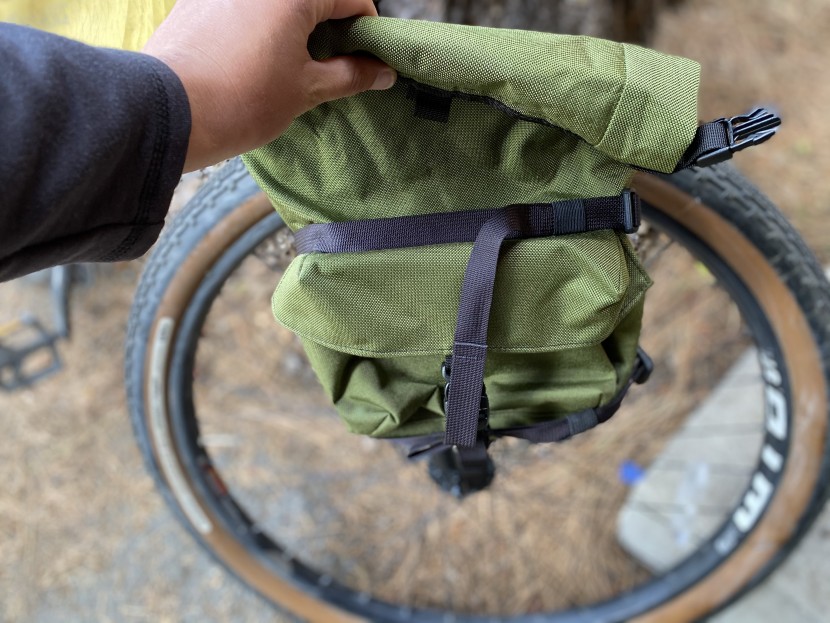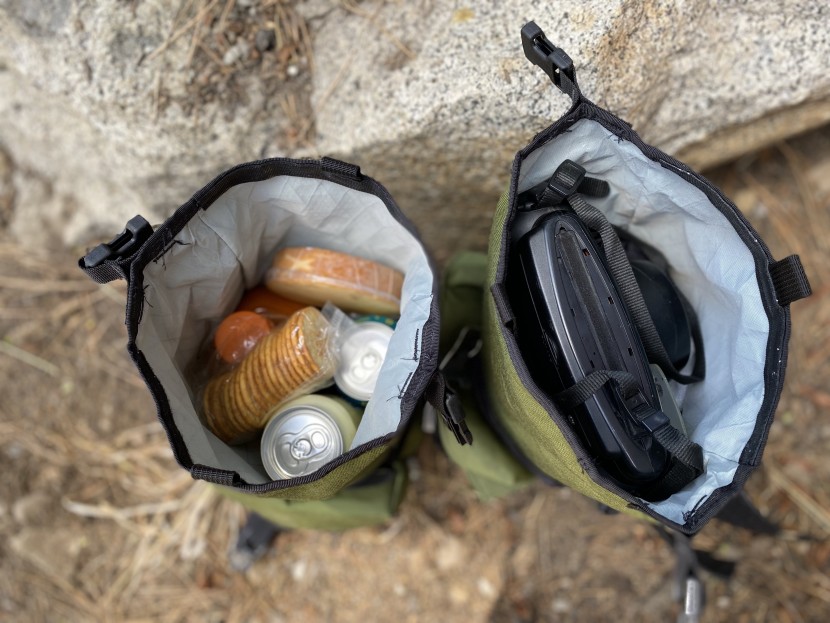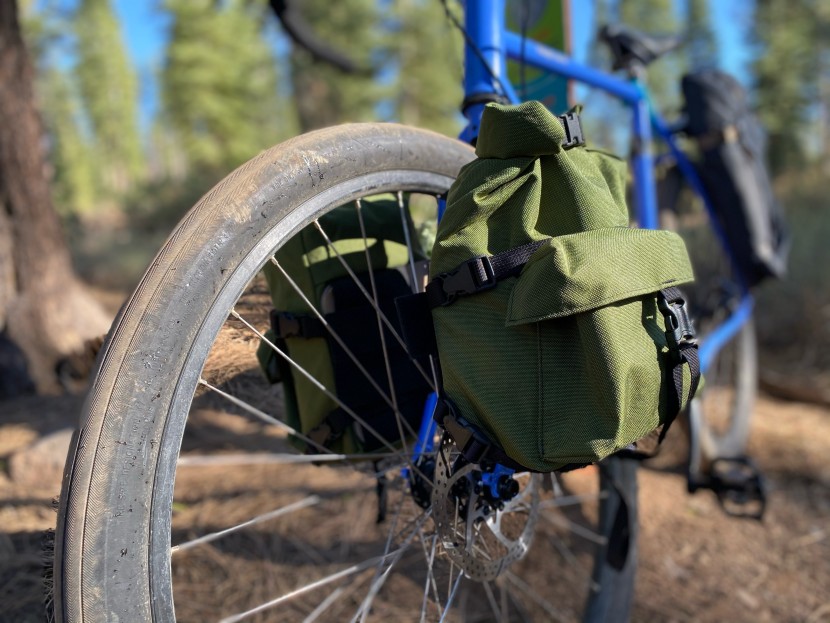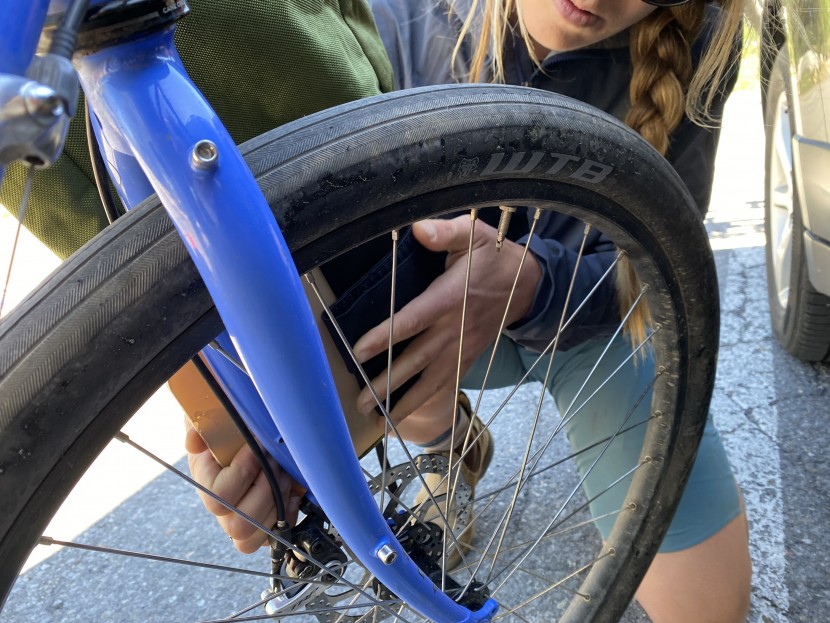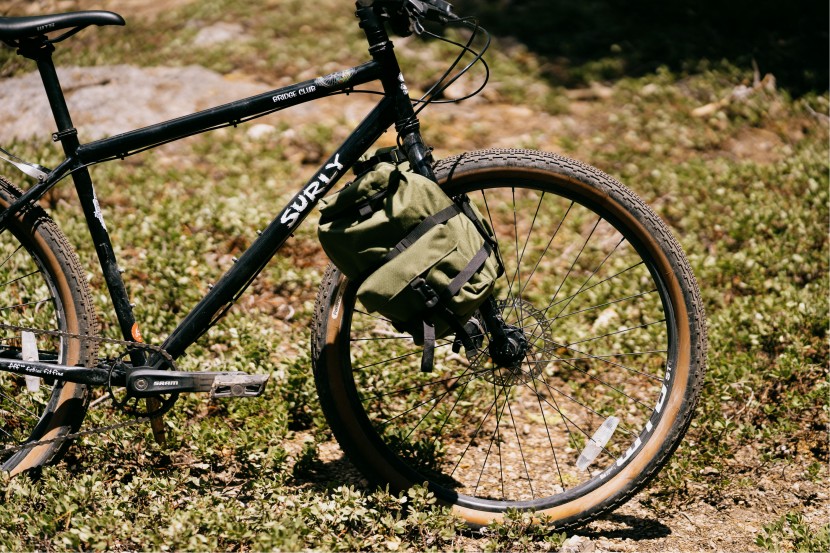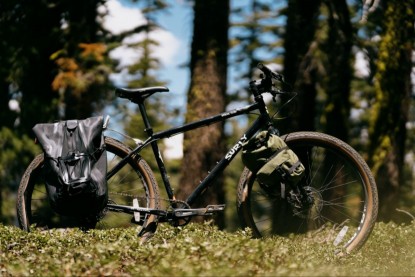Outer Shell Pico Panniers Review
Our Verdict
Compare to Similar Products
 This Product
Outer Shell Pico Panniers | |||||
|---|---|---|---|---|---|
| Awards | Best Overall Bike Pannier | Largest Overall Storage Volume | Best Bang for Your Buck | Best for Urban Riding | |
| Price | $230 List | $190.00 at Amazon Compare at 3 sellers | $189.95 at Backcountry Compare at 2 sellers | $99.95 at REI Compare at 2 sellers | $240 List |
Overall Score  |
|||||
| Star Rating | |||||
| Bottom Line | A minimalist option that serves as a hybrid for on and off-road commutes, though the unique mounting system is imperfect and comes at a steep price | A high-quality, consistently top-ranked design that is often imitated by others | An impressive model designed with maximum durability and storage in mind, but lacks organizational options | Great value for durable and waterproof bags that come in a compact and sleek design, though there are few pockets and the bags are only compatible with 10 mm racks | A versatile design with plenty of storage in a durable and waterproof package |
| Rating Categories | Outer Shell Pico Pa... | Ortlieb Back Roller... | Thule Shield | Burley Pannier Set | Arkel Signature H U... |
| Mounting System (25%) | |||||
| Storage (20%) | |||||
| Durability (20%) | |||||
| Weatherproofing (20%) | |||||
| Ease of Use & Versatility (15%) | |||||
| Specifications | Outer Shell Pico Pa... | Ortlieb Back Roller... | Thule Shield | Burley Pannier Set | Arkel Signature H U... |
| Volume (liters) | 2 x 4 L | 2 x 20 L | 2 x 25 L | 2 x 11 L | 24 L |
| Dimensions (in.) (H x W x D) | 9.5" x 3.3" x 7.5" | 16.5" x 12.6" x 6.7" | 14.6" x 7.9" x 15.8" | 14.5" x 10" x 6" | 16" x 12" x 6.5" |
| Weight (pounds) | 2.2 lbs (pair) | 4.2 lbs (pair) | 4.3 lbs (pair) | 2.1 lbs (pair) | 2.3 lbs |
| Material | PU coated Cordura | PS 490 and PD 620 nylon | Thermal welded 420D nylon | 500D tarpaulin PVC fabric | 1000 denier Cordura nylon |
| Pockets | One main compartment and one external buckle pocket | Internal sleeve and zippered mesh pocket | Internal sleeve with two smaller mesh sleeves | 1 main compartment, one small exerior pocket | Internal laptop sleeve with zippered pocket, small external pocket |
| Best Use | Touring | Touring | Touring | Touring/Commuting | Urban/Commuting |
Our Analysis and Test Results
Outer Shell took a minimalist approach to the standard touring pannier by designing a micro-pannier that adheres to necessities-only storage. The bags are designed for both rigid frames and full-suspension forks, making for a great multi-functional option between road, gravel, or mountain bike rides. The bags performed well on rugged rides when holding lighter-weight items but fell short on off-trail strength & durability with heavier items. The mounting system is unique and saves the customer the need to purchase a rack, yet we wouldn't consider it “bombproof” as advertised. Two or three-bolt tiered bosses and cap screws are a must to mount the panniers securely to your fork.
Mounting System
The Pico Panniers initially piqued our interest because of the advertised no-rack-necessary mounting system. A polycarbonate mounting plate attaches to two and three-bolt bosses on the front fork or seat stay, then the integrated “rack & bag” system allows for the panniers to slide onto the mounting plate with heavy-duty velcro to cinch around the mount, securing the bag to the fork or frame. Once the plate has been mounted, the bags are quite simple to slide on and off. Though, compared to the rest of the lineup with rack mounts, the attachment and removal process feels quite tedious.
A second selling point of the Outer Shell micro-panniers is the unique ability to use the bags on a full-suspension fork. With the Clamp Kit Add-On, you can transfer these bags from your road or gravel bike to your mountain bike. Unfortunately, the allure of the Clamp-On Kit is lost in its retail price that adds nearly 50% to the cost of the bags. The price point for the micro-panniers is high enough that it may be hard for consumers to justify this purchase when competitive products have the same capabilities with greater storage space.
One frustration that is important to note is the product advertising related to mounting capabilities and frame/fork compatibility. We felt that the product description could be more specific and user-friendly to give customers a clear warning that the plate is not compatible with all forks with bolt bosses. The plate features tiered/cascading holes that will not properly line up with all bolt positions. Some forks have no bolts at all. This seems like an obvious oversight for consumers to make, but not everyone reads through the fine print or knows the many nuances of bike accessory compatibility. Regardless, a video or product specification should be made to bring clarity to the pannier mounting situation.
Storage
The Outer Shell Pico Panniers have roughly 4 liters of storage between the two bags (the amount isn't specified on the product website). While the micro-panniers have the least amount of storage space in the comparison group, they serve the same purpose as a necessities-only frame bag or saddlebag. We were able to fit a thin jacket, extra water, tool kit, tube, handheld pump, sandwich and/or multiple granola bars, and a cell phone, with wiggle room for additional small items. If your objective is brewery-hopping, the website claims you can fit one 64-ounce growler in each bag, which we verified!
The micro pack provides one large stuff-sack style compartment with a small yet spacious external pocket. We felt the simplicity of the storage offerings adhere to the bags' intended use. One drawback was the noticeable difference in movement and play based on the amount of weight in the bags. With the aforementioned list of items, the bags felt light and nimble, yet once filled with heavier items like beer and water, the bags created noticeable rattling and seemed to sag on the mounting plates.
With the least amount of storage capacity of the group, the selling point is clearly not in the volume of storage but in compactness. Small and nimble bags along with evenly distributed weight are ideal for bikepacking rides and touring adventures. The micro-panniers are not enough storage on their own but make for a great addition to saddle and frame bags.
Durability
The micro-panniers passed the “toss test,” remaining unscathed after dropping the bike on the bags along gravel roads. It is possible that the lighter colorways would express scratches and abrasions more easily, but the olive green seemed to mask obvious wear and tear. While the heavier items didn't seem to strain the nylon during trail rides, the weight could make the material more susceptible to tears. Luckily, an X-Pac option is available for a nominal cost. X-Pac was first used in the sailcloth industry and is considered to be stronger, lighter, and more waterproof than the standard PU (polyurethane) coated nylon liner. For this reason, you will see it on a variety of bike bags used for backcountry touring purposes.
Unfortunately, the bolts on our fork didn't line up with the plate, so we were operating on one screw when the recommended mounting use is two or three screw touchpoints. It worked, but undoubtedly, the plate would feel more durable under rougher off-trail conditions had the plate had two points of contact on the fork. While less important but worth noting, the laminate on the polycarbonate plate began to peel after only two uses. While this had no noticeable effect on the plate, it gave the appearance of being a rather cheap item.
Weatherproofing
The Cordura nylon is tough and highly weatherproof but does not quite stand up to some of the competition in the review class. The material passed the spray test, meaning light-medium rain would not penetrate the bag's interior, particularly with the thick roll-top closure. However, the soak test resulted in a damp bag that did not dry out for several hours. Cordura nylon is more susceptible to holding moisture than X-Pac, so if that is a worry, upgrading to the X-pac option would be a wise choice.
Ease of Use & Versatility
The Pico Panniers ranked favorably on versatility and design but ranked lower on ease of use than the rest of the review class. While the mounting plates for the Pico Panniers are interesting and innovative, we felt that the ease of mounting and removal was somewhat tedious compared to the standard rack attachment. Anytime you decide to remove the bags, the plate remains bolted to the fork. Say you use the same bike for trail riding or commuting around town but don't feel like using the micro panniers all the time; you would theoretically have to remove the plastic plates and then remount them the next time you use them. For those used to the variety of touring bag mounting systems, this is likely not a big deal, but for those looking for efficiency in transition, this would seem to be an unnecessary step in usage.
The micro-pannier is an emerging trend in the bikepacking market for riders who are interested in distributing weight around the bike in a manner that is more applicable for off-roading. The bags are designed to live on the front fork though the mounting plate allows the bags to live on the seat stay if bolts allow for it. Smaller storage compartments on the front of the bike ensure less drag and strain on the rear tire. The Pico Panniers serve as a great alternative to setups that lack tire clearance for a saddle bag or for riders who avoid frame bags.
Value
If we compare the price of the Outer Shell Pico Panniers to market competitors, the standard price tag is not far off from other bikepacking bags. Unfortunately, the storage size is far less than the review class, at roughly 2 liters per bag. The standard PU coating on our test bag is water-resistant but not entirely waterproof, and the Cordura Nylon is not as robust as other materials in the pannier lineup. While there is an option for a clamp kit and an upgraded X-Pac liner, these modifications come at a cost. The micro-panniers offer up a great alternative to other small-storage bike bags, yet over time, may lack the sturdiness and durability necessary for backcountry adventures.
Conclusion
The Outer Shell Pico Panniers are an admirable innovation in modified storage for those who hope to add a pannier design to their bikepacking adventures. The bags are stylish and nimble and allow bikers to place storage weight on the front of the bike rather than the back. While the design is unique, it is lacking in storage volume and versatility that transpires across a variety of biking disciplines. Had the mounting system been easier to use, we may have been more inspired by the bags, but unfortunately, there are more impressive micro-panniers on the market.


